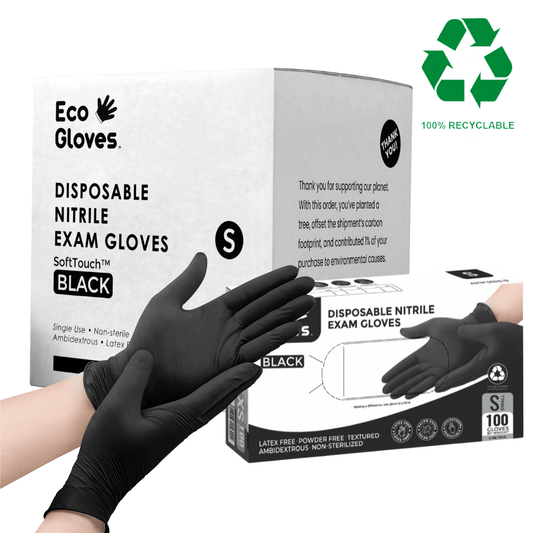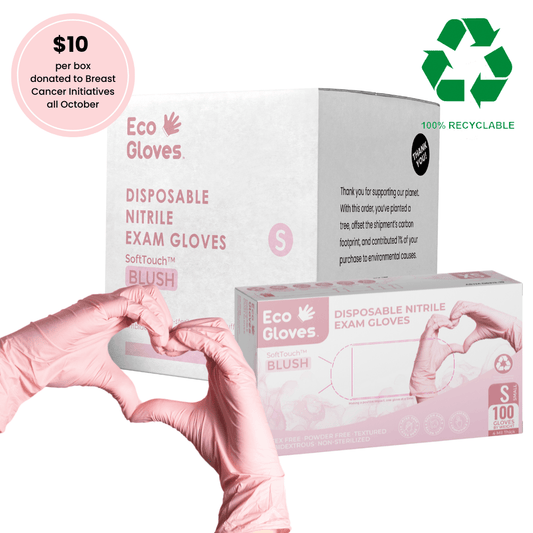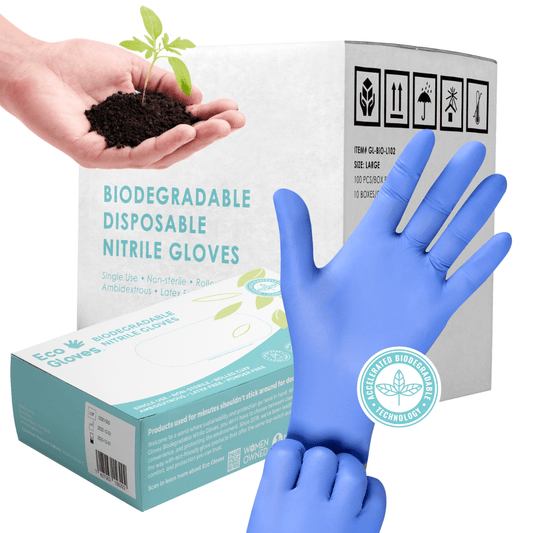Why Latex Gloves Are No Longer Ideal
Eco GlovesTraditional latex gloves, once a staple in foodservice operations, have steadily fallen out of favor due to a combination of health, environmental, and operational concerns. While they provide excellent elasticity, fit, and barrier protection, these advantages are often outweighed by their significant drawbacks. This article delves into why latex gloves are no longer ideal, offering insights supported by data, regulatory trends, and emerging alternatives.
Topics Covered
- Allergy Risks of Latex Gloves
- Superior Alternatives to Latex Gloves
- Regulatory and Industry Trends
- Frequently Asked Questions About Latex Gloves and Alternatives
Allergy Risks of Latex Gloves
One of the most pressing issues with latex gloves is the potential for allergic reaction. The U.S. Occupational Safety and Health Administration (OSHA) estimates that 8-12% of healthcare workers and around 1-6% of the general population experience some form of latex sensitivity or allergy-. Symptoms range from mild skin irritation (contact dermatitis) to severe anaphylactic reactions, making latex gloves unsuitable for many employees in the foodservice industry. The other concern is from cross-contamination risks that can arise when latex particles transfer to food items, posing dangers to allergy-sensitive customers. This issue is especially significant in fast food settings, where gloves are frequently used to handle raw and prepared foods.
Environmental Concerns
While latex is derived from natural rubber tree sap, its environmental impact is far from negligible.
Decomposition Challenges
Latex gloves are technically biodegradable under ideal conditions. However, most gloves and PPE end up in landfills, where limited oxygen and lack of composting facilities slow decomposition. Studies indicate that latex gloves can take 5 years or more to break down in such environments, contributing to long-term waste accumulation.
Chemical Leachate
- The manufacturing process often involves chemical accelerants, which can leach into soil and water systems during decomposition. These chemicals pose additional environmental risks, particularly in areas with high glove disposal rates.
Quantifying Waste
With billions of gloves used annually in the foodservice industry, even a small percentage of latex gloves significantly adds to the overall waste burden. For example, the U.S. alone generates approximately 300 billion disposable gloves annually across industries.
Superior Alternatives to Latex Gloves
The emergence of latex-free gloves has provided safer, more sustainable solutions for various industries.
Nitrile Gloves
- Advantages: Latex-free, durable, and resistant to punctures and chemicals.
- Best Use Cases: Ideal for industries like foodservice, medical, and cleaning, where durability and environmental considerations are crucial.
- Environmental Benefits: Many nitrile gloves now feature biodegradable technology, breaking down up to 10 times faster than traditional gloves in landfill conditions.
Polyethylene, Hybrid Vinyl, and TPE Gloves
- Advantages: Lightweight, economical, and suitable for short-term use.
- Best Use Cases: Ideal for quick tasks in foodservice, such as sandwich preparation.
- Environmental Benefits: PE gloves don’t necessarily provide an environmental benefit, however, their material or production could be more environmentally-friendly if they use reduced reliance on renewable resources.
Compostable Bioplastic Gloves
- Advantages: Made from plant-based materials, these gloves fully decompose in industrial composting facilities within 90-180 days.
-
Environmental Impact: Provides a truly eco-friendly alternative that helps reduce plastic waste in landfills and contributes to a circular economy.
Regulatory and Industry Trends
Regulations and shifting industry standards also discourage the use of latex gloves:
Bans on Latex Gloves
Several states, including Arizona, California, Connecticut, Hawaii, Ohio, Oregon and Rhode Island, have enacted bans or restrictions on latex gloves as part of their state latex ban in foodservice due to allergy risks. These legislative moves reflect growing awareness and are likely to expand nationwide.
Corporate Adoption
Major foodservice chains like Chipotle and McDonald’s have transitioned away from latex gloves. These decisions are driven by both compliance with regulations and consumer demand for safer, more sustainable practices.
Meeting Consumer Expectations
The shift away from latex gloves in industries like foodservice is driven by health, environmental, and operational concerns. With superior alternatives such as nitrile, biodegradable nitrile, polyethylene, and compostable bioplastic gloves readily available, businesses have the opportunity to protect employees and consumers, reduce environmental impact, and meet evolving regulatory standards and consumer expectations.
Learn more about sustainable gloves and explore all our latex-free alternatives here.
Key Takeaways: Why Latex Gloves Are No Longer Ideal
-
Allergy Risks Limit Use: 8–12% of healthcare workers and up to 6% of the general population experience latex sensitivity, making these gloves unsuitable for many workplaces.
-
Cross-Contamination Concerns: Latex particles can transfer to food, posing serious risks for allergy-sensitive customers.
-
Environmental Drawbacks: While biodegradable in theory, latex gloves can take 5+ years to break down in landfills and may leach harmful chemicals.
-
Waste Impact is Significant: With billions of gloves used annually, latex gloves contribute heavily to global PPE waste.
-
Better Alternatives Exist: Nitrile (including biodegradable nitrile), polyethylene, TPE, and compostable bioplastic gloves offer safer, more sustainable options.
- Regulations Are Expanding: Multiple states already ban latex gloves in foodservice, and more legislation is expected.
👉 Eco Gloves provides high-performance, latex-free alternatives—helping you protect your team, your customers, and the planet.
Frequently Asked Questions About Latex Gloves and Alternatives
-
Are latex gloves banned in all states?
No. However, states like Arizona, California, Connecticut, Hawaii, Ohio, Oregon, and Rhode Island have enacted bans in foodservice, with more states considering similar legislation.
-
Do latex gloves decompose faster than nitrile gloves?
Yes, under ideal conditions, latex decomposes in about 5 years—faster than traditional nitrile—but still much slower than accelerated biodegradable nitrile, which can degrade in 1–3 years.
-
What are the best alternatives to latex gloves for foodservice?
Nitrile, biodegradable nitrile, polyethylene (PE), thermoplastic elastomer (TPE), and compostable bioplastic gloves are all effective options depending on usage and durability needs.
-
How do nitrile gloves compare to latex in terms of safety?
Nitrile gloves are latex-free, reducing allergy risks, while also offering superior puncture resistance and chemical protection.
-
How do nitrile gloves compare to latex gloves in cost?
Nitrile gloves may be slightly more expensive, but their durability and allergy-free composition often make them a better long-term investment.


















